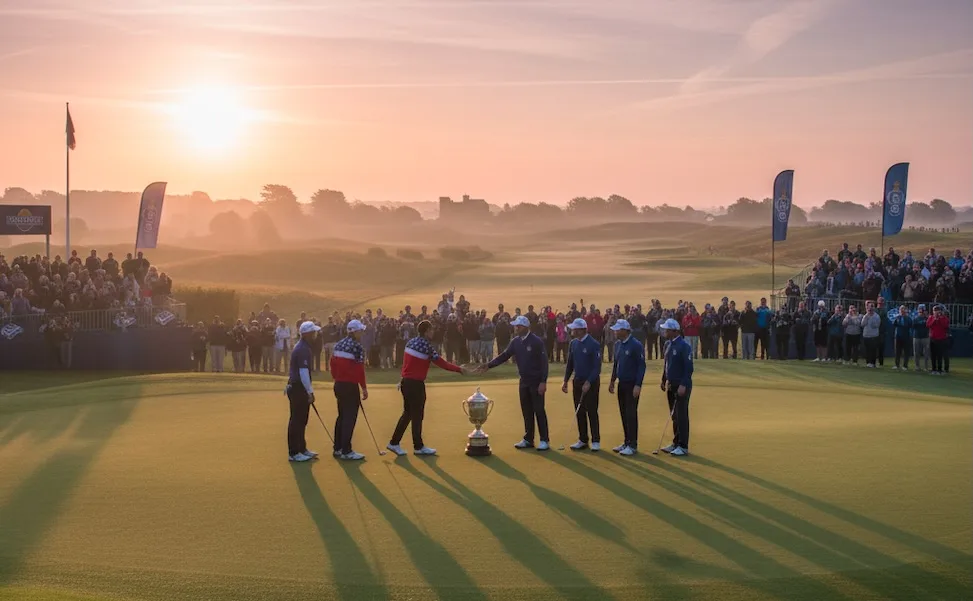
Why the Ryder Cup has a strong Home Bias
The Ryder Cup returns to U.S. soil in 2025 at Bethpage Black — one of the most iconic, demanding courses in America.
Bethpage is known for its long, punishing layout, narrow fairways, and relentless rough — a setup that historically favors big hitters who keep the ball straight. The U.S. team, armed with its own analytics group, will be looking to flip the script and create a course setup that maximizes their power while making life difficult for Europe’s precision players.
The Rise of Data-Driven Course Setup
Over the past decade, Ryder Cup strategy has evolved beyond pairings and captain’s picks. Analytics now play a starring role. Europe perfected the playbook in 2018 at Le Golf National, using data to tweak rope lines, narrow landing areas, and manipulate tee boxes to force the Americans into uncomfortable positions.
Expect the U.S. team to take a page out of that playbook at Bethpage Black. By using ShotLink data, strokes-gained analysis, and predictive modeling, they can craft a setup that rewards aggressive driving and punishes conservative play — a style that mirrors the strength of players like Scottie Scheffler, Xander Schauffele, and Wyndham Clark.
How Bethpage Could Be Tweaked
Here are a few ways the U.S. side might use data to tilt the odds:
- Narrow Landing Zones for Short Hitters: Identify carry distances where European players are likely to lay back, then pinch fairways to make those spots riskier.
- Thicker Rough Beyond Certain Yardages: Force European players to hit drivers and risk missing fairways rather than playing conservatively.
- Optimizing Tee Box Locations: Create ideal approach yardages for U.S. wedge specialists on par 4s, while leaving Europe awkward half-wedge distances.
- Three-Shot Par 5s for Control: Keep some par 5s playing long to reward superior U.S. ball-striking and limit birdie chances from shorter European hitters.
The Americans will have learned from 2018 — expect a much more aggressive and targeted course-setup strategy.
History of Home Advantage in the Ryder Cup
One of the most striking trends in modern Ryder Cups is the dominance of the home team. Here’s a look at the last 10 Ryder Cups and who came out on top:
| Year | Host Country | Venue | Winner | Home Team Won? |
|---|---|---|---|---|
| 2023 | Italy | Marco Simone | Europe | ✅ |
| 2021 | USA | Whistling Straits | USA | ✅ |
| 2018 | France | Le Golf National | Europe | ✅ |
| 2016 | USA | Hazeltine | USA | ✅ |
| 2014 | Scotland | Gleneagles | Europe | ✅ |
| 2012 | USA | Medinah | Europe | ❌ |
| 2010 | Wales | Celtic Manor | Europe | ✅ |
| 2008 | USA | Valhalla | USA | ✅ |
| 2006 | Ireland | K Club | Europe | ✅ |
| 2004 | USA | Oakland Hills | Europe | ❌ |
Is the Home-Field Advantage Growing Stronger?
In the past 10 Ryder Cups, the home team has won 8 of 10 times — an 80% success rate. The only exceptions were Europe’s shocking comeback at Medinah in 2012 and their win at Oakland Hills in 2004.
With data-driven course setups, the home advantage appears to be getting stronger, not weaker. The combination of crowd support, intimate course knowledge, and precision course manipulation gives the host team an edge before the first tee shot is even struck.
What This Means for 2025
For the U.S., Bethpage Black represents an opportunity to turn the tables. If they succeed, it will reinforce the idea that Ryder Cups are increasingly decided by who holds the home setup card — and how well they play it.
But if Europe can overcome the course and the crowd in hostile territory, it could go down as one of the most impressive Ryder Cup wins in modern history.
